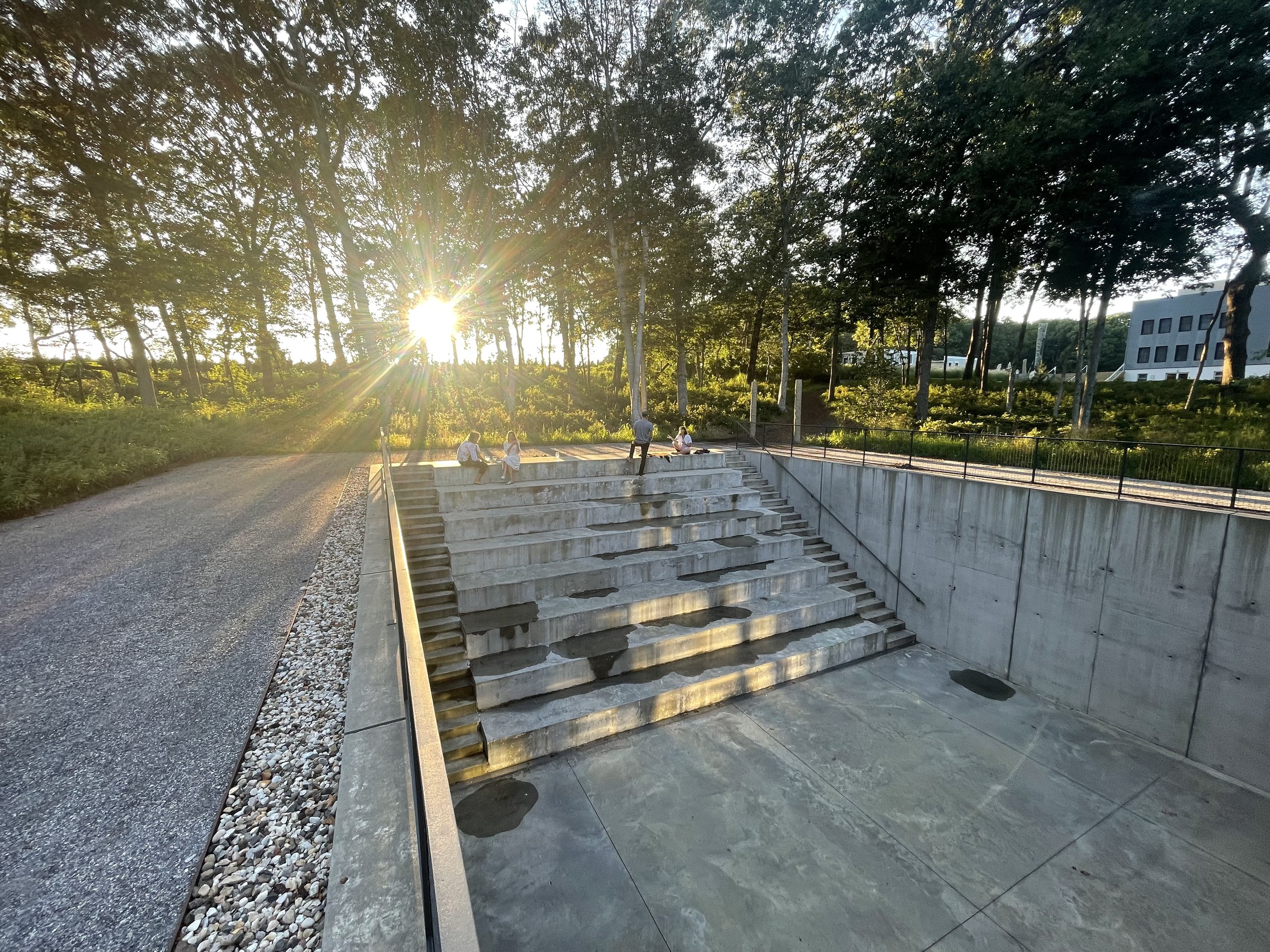
Photo by Anaqui Seer
TALKING BIRDS
This week-long collaborative workshop/seminar/creative project generated material for an emergent archive from which the new theater piece sprung, through experimental practices of attention, reading, writing, open discussions/ interviews, ethno-surrealist games, collaborative cooking, workshopping, deep dives into shared concerns.
TALKING BIRDS provided time for a group of 8 individuals who are part of the international organization ESTAR(SER) to convene in the spirit of conviviality to address some core themes related to -- practices of attention -- in the lush and theatrical environs of Robert Wilson's Watermill Center. We approached this week through an auto-interrogative lens, asking key questions about the nature of attention, care, and community, and producing a new piece of documentary theater (which was presented at the Frye Museum in Seattle, WA). Organized by Dr. Graham David Burnett (Princeton), and Dr. Joanna Fiduccia (Yale), the resulting work was presented by Hermione Spriggs and Kyle Berlin on September 9th, 2023.
The live documentary theater performance exploring themes from THE THIRD MEANING, ESTAR(SER) Installs the Frye Collection. Drawing on wide-ranging interviews with alleged and suspected associates of the “Order of the Third Bird,” as well as immersion in their activities and the archives of ESTAR(SER), Hermoine Spriggs and Kyle Berlin present an unusually frank investigation attempting to answer questions about this elusive group.
What is the “Order of the Third Bird” (or Avis Tertia)? Does such a historical organization committed to practices of radical human attention actually exist, or is it merely the apocryphal invention of wannabe aesthetes? What is radical human attention anyway? What does it mean to “attend” to the world? To art? To each other? What can attention do for us?
About the Watermill Center
The Watermill Center is a laboratory for the arts and humanities providing a global community with the time, space, and freedom to create and inspire.
Founded in 1992 by avant-garde visionary Robert Wilson, The Watermill Center is an interdisciplinary laboratory for the arts and humanities situated on ten acres of Shinnecock ancestral territory on Long Island’s East End. With an emphasis on creativity and collaboration, The Center offers year-round artist residencies and education programs, providing a global community with the time, space, and freedom to create and inspire.
The Watermill Center’s rural campus combines multifunctional studios with ten acres of manicured grounds and gardens, housing a carefully curated art collection, expansive research library, and archives illustrating the life and work of Artistic Director, Robert Wilson. The Center’s facilities enable Artists-in-Residence to integrate resources from the humanities and research from the sciences into contemporary artistic practice. Through year-round public programs, The Watermill Center demystifies the artistic process by facilitating unique insight into the creative process of a rotating roster of national and international artists.
There remains some confusion about the history of practices of the body known as “The Order of the Third Bird,” but evidence points to its having been for some time a loose network of cell-like groups that engage in ritualized forms of sustained attention to works of art. The canons of secrecy around these activities – their structure and purposes – have traditionally been understood to be sufficiently restrictive as to leave some doubt whether an individual professing inwardness with the “Order” could in fact be genuinely associated therewith.
The Esthetical Society for Transcendental and Applied Realization (now incorporating the Society of Esthetic Realizers) is an established body of private, independent scholars and amateurs who work collectively to recover, scrutinize, and (where relevant) draw attention to the historicity of the so-called Avis Tertia, or “Order of the Third Bird”.




